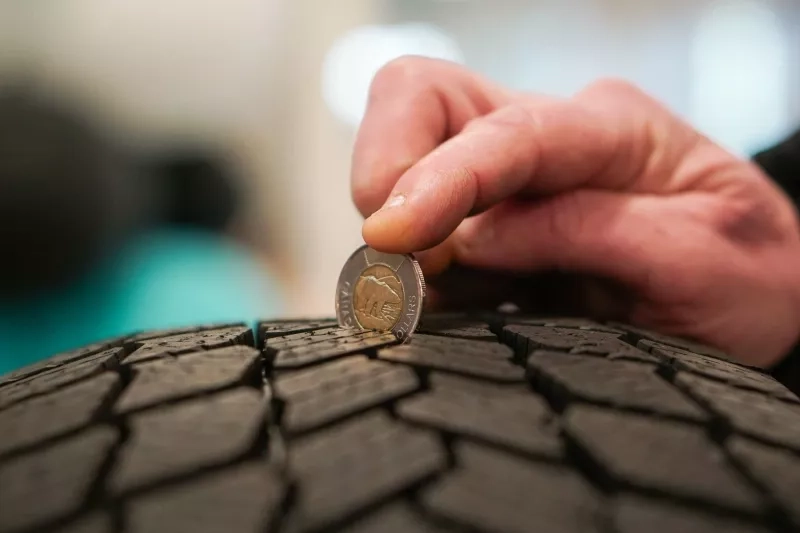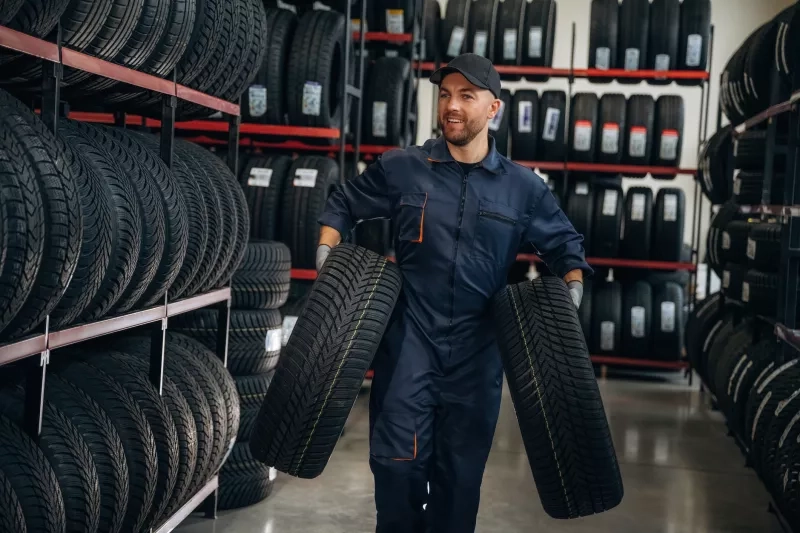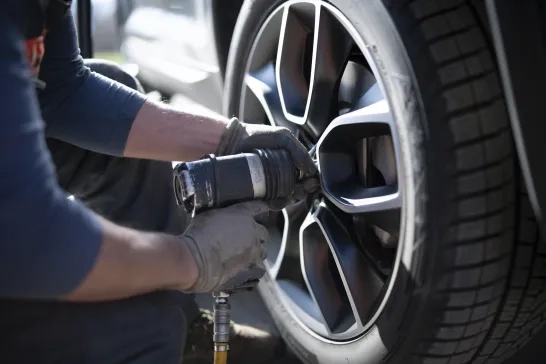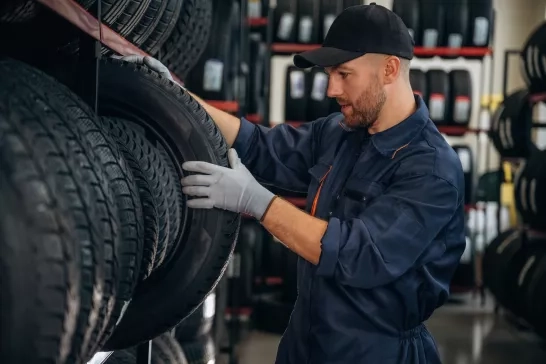
Don't wait too long: When to replace your tires
2 Minute Read
Your tires are the only thing connecting your car to the road, making them an essential part of driving. They affect how your car handles, how well it brakes, and, most importantly, your safety.
But many people forget to ask a key question: When should you replace your tires? Taking care of your tires isn't just about saving money – it's about keeping you and others safe on the road.
Dangers of driving on worn tires
Worn-out tires are a serious safety risk. Less tread means less grip, especially in wet or icy weather, making skidding and hydroplaning more likely. It also takes longer to stop, which could mean the difference between avoiding an accident and causing one. Over time, if tires are not replaced, the risks only increase. Bald or damaged tires are more likely to blow out, putting you and others in danger.
Plus, worn tires cost you more at the pump. They create extra resistance, so your car uses more fuel. Replacing your tires on time isn't just smart; it's essential for safe, smooth, and efficient driving.
When to replace your tires
Tires don't last forever. Even with regular maintenance, any tire will need to be replaced. Even if your tread looks fine, most manufacturers recommend replacing tires after six to 10 years, regardless of usage. Over time, rubber naturally deteriorates, impacting the tire's performance and safety.
Tires often wear out faster in Ontario's harsh conditions, including cold winters, rough roads, and extreme temperature swings. With the average Ontario driver covering about 16,000 km per year, most tire sets are expected to last around 3-3.5 and a half years.
With typical use and proper rotation of seasonal tires, you can get closer to 4.5-5 years from the winter set and 5-6 years from the summer ones, or 4–6 years combined.
But how do you know when it's time to swap them out? Here are some telltale signs:
Visible wear bars
All tires sold in Canada come with built-in tread wear indicators, known as wear bars. When your tread wears to 1.6 mm, these indicators become visible. If you can see them across the tire's length, it's time for a replacement.
Tread depth test
A quick way to check your tire tread is to use a toonie. Simply slip the coin into the tire grooves. If the tread reaches the bear's paws on a toonie, your tires have plenty of life left. The tires are about half worn toonie if it only covers the silver portion. However, if the tread only reaches the letters "Canada," it's time to start considering replacing your tires.
Transport Canada recommends replacing winter tires when the tread depth falls below 4 mm to ensure optimal grip on snow and ice.
Cracks or bulges
Visible cracks, bulges, or cuts along the tire sidewall are major red flags. These can weaken the tire's structural integrity and may lead to a blowout.
Uneven wear
Uneven tire wear is often caused by improper alignment, unbalanced weight distribution, or suspension problems. Regular maintenance can sometimes address the issue, but severe wear typically means it's time for a replacement.
Get new tires at home
Just before you swap your tires in the winter and again in the spring, it's the perfect time to check them and ensure they are still in good condition.
Need new tires? With CAA's Mobile Tire, you can conveniently buy your tires online, and then our experts will install them at your home. Buy your new tires now or explore all of CAA's Pit Crew Services.
Not a Member yet? Join now to unlock this and other exclusive benefits.





